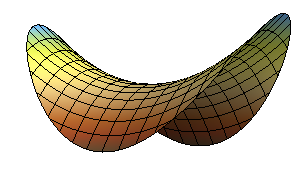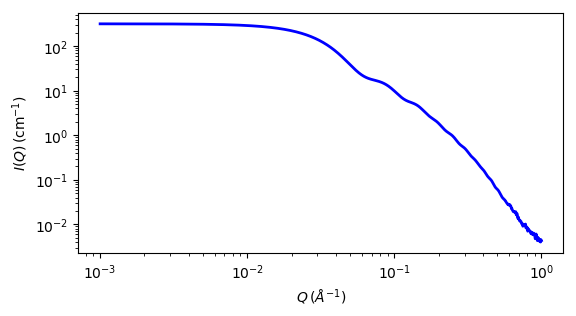pringle
The Pringle model provides the form factor, P(q), for a ‘pringle’ or ‘saddle-shaped’ disc that is bent in two directions.
| Parameter | Description | Units | Default value |
|---|---|---|---|
| scale | Scale factor or Volume fraction | None | 1 |
| background | Source background | cm-1 | 0.001 |
| radius | Pringle radius | Å | 60 |
| thickness | Thickness of pringle | Å | 10 |
| alpha | Curvature parameter alpha | None | 0.001 |
| beta | Curvature paramter beta | None | 0.02 |
| sld | Pringle sld | 10-6Å-2 | 1 |
| sld_solvent | Solvent sld | 10-6Å-2 | 6.3 |
The returned value is scaled to units of cm-1 sr-1, absolute scale.
Definition
The form factor for this bent disc is essentially that of a hyperbolic paraboloid and calculated as
where
and Δρ is ρpringle−ρsolvent, V is the volume of the disc, ψ is the angle between the normal to the disc and the q vector, d and R are the “pringle” thickness and radius respectively, α and β are the two curvature parameters, and Jn is the nth order Bessel function of the first kind.

Fig. 34 Schematic of model shape (Graphic from Matt Henderson, matt@matthen.com)

Fig. 35 1D plot corresponding to the default parameters of the model.
Source
pringle.py
⋆ pringle.c
⋆ gauss76.c
⋆ sas_JN.c
⋆ sas_J1.c
⋆ sas_J0.c
⋆ polevl.c
Reference
- Karen Edler, Universtiy of Bath, Private Communication. 2012. Derivation by Stefan Alexandru Rautu.
- Onsager, Ann. New York Acad. Sci., 51 (1949) 627-659
Authorship and Verification
- Author: Andrew Jackson Date: 2008
- Last Modified by: Wojciech Wpotrzebowski Date: March 20, 2016
- Last Reviewed by: Andrew Jackson Date: September 26, 2016